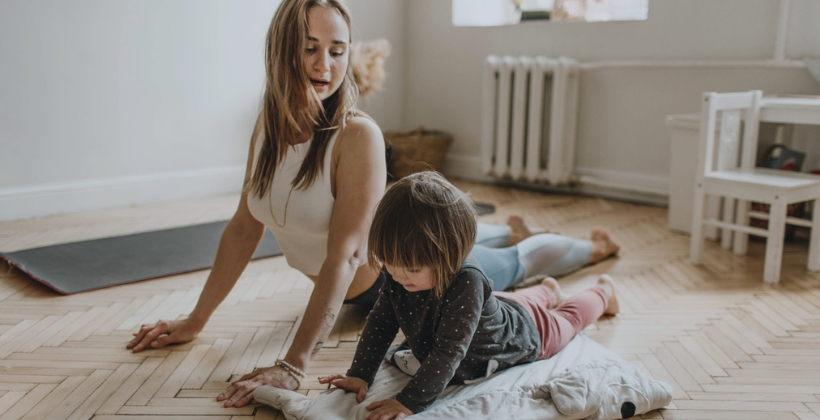I was recently thinking about what we mean when we say the word ‘childlike’. Wonder and curiosity, or a tendency to become hijacked by strong, poorly understood emotions?
While the latter may be the case children also tend to be more in tune with their bodies and their ‘felt sense’ (Levine, 1997) than adults. As our prefrontal cortex developed we gained the power of problem-solving, understanding consequences, and a better ability to regulate our strong emotions. However, as we have grown many of us have also become quite disconnected from our ‘childlike’ selves and our felt sense. A simple body scan can give us an indication of just how far removed we are from an awareness of how we really feel in our body.
There are so many ‘hacks’ available
Gabor Mate has long professed that many of us stay purposefully disconnected from our instincts and gut feelings through our various addictions – shopping, online scrolling, mindless eating, alcohol consumption, substance misuse or even work. Several psychotherapeutic approaches take the body as their main focus, with Somatic Experiencing and Porges’ Polyvagal Theory teaching us about the role of our autonomic nervous system, our vagus nerve, and how we can become more aware of what triggers us into a bodily feeling of threat or anxiety and what ultimately moves us out of this space. There are now so many ‘hacks’ available to help us access our rest-and-digest, safely connected bodily sensation and I was recently struck by how many childhood games can also do just that.
How we calm ourselves in times of stress
Those who regularly practice yoga will know the importance of body awareness and will feel the absence of their practice if they go without for a long time. The rest of us (!) could learn more about this. Our vestibular system, which gives us our sense of gravity, balance, spatial and body awareness, is key to our ability to self-soothe when triggered into anxiety. Our way of gaining this awareness of our body comes through our proprioceptive system – where sensory input gets translated into the felt sense of pressure or force and is found in our muscles and joints. Anyone with experience of ASD (Autism Spectrum Disorder), themselves or known others will be aware of how proprioception sensory input can help to calm and regulate strong emotions and strong reactions to stimuli in the environment.
Why am I writing about this? I think it is fair to say these past 2 years have left us all feeling a little dysregulated a little more often. How do we learn to self-regulate? Self-regulation in its broadest sense refers to our ability to manage our emotions and cognitions and control our impulses. It is how we calm ourselves in times of stress. It is not an inbuilt ability, however – it must be learned. An infant and child learn to self-regulate through the act of co-regulation, which (in the best case scenario) occurs through the consistent and predictable presence of their primary carer. As the carer soothes the distressed infant (crying soothed by rocking, toddler ‘tantrums’ soothed by warm presence and acceptance of strong emotions) the individual begins to learn how to self-soothe. While we all require co-regulation at times, the ability to self-soothe is worth its weight in gold. And so, here we are, looking at the things children naturally and instinctually do as they attempt to independently learn regulation skills.
Gravitational security
To go back to our vestibular system, Jean Ayres has stated “one of the most basic of all human relationships is our relationship to the gravitational field of the earth. This relationship is even more primal than the mother-child relationship. Sensory integration of the vestibular system does give us ‘gravitational security’ – the trust that we are firmly connected to the earth and will always have a safe place to stand.” Ruth Lanius went further to suggest that we “co-regulate with gravitational security or dysregulate with gravitational insecurity”. Ever wonder why children are constantly trying to go upside down? Enjoy tumbling, hanging upside down over the couch, or looking like they are attempting the Downward Dog yoga pose? This is their innate drive to self-regulate through inversion, getting their head lower than their heart, which can have a calming effect and is a good way to regulate our autonomic nervous system (slows heart rate sending signals of safety to our brain) and vestibular system (allows us to gain a solid awareness of our body).
How children naturally work on their skills of self-soothing and why they work so effectively to relieve stress:
- Jumping up and down/ star jumps/ trampoline/ jumping a rope – all classic kids gamesfor a reason. These activities increase proprioceptive input – the muscles and joints that feel force and pressure – and help to regulate our autonomic nervous system and soothe/ calm ourselves by allowing us to really feel our body and to feel control over it.
- Swinging on a swing or rocking on a rocking chair – A swing is an item found in most playgrounds, and children love this type of activity because it imitates the rocking motion of the womb and instigates an action in the brain similar to the rhythmic patterns of sleep.
- Cycling – ever wonder why a child can cycle around and around on a tricycle or bike for what seems like an eternity? Apart from the reduction in the stress hormone cortisol through the act of cardio exercise, Chronister states that “when you ride, you get a spike in neurochemicals such as serotonin and dopamine that relieve pain and improve mood”. It helps to synchronise your circadian rhythm, and the uniform movement relaxes the brain.
- Singing/humming – the act of singing can access the ventral branch of the vagus nerve, which triggers the rest-and-digest response. This is often seen in the chanting that accompanies some forms of meditation or yoga. The ‘om’ is not decorative but quite productive! The only thing better than singing to access this safe space is singing with someone, or with others, as this helps us feel connected and instigates a wonderful sense of attunement.
- Bilateral drawing – aka scribbling with both hands. Fun! While we often see children scribbling, attempting to use both hands is often discouraged as we try to enforce learning and order (‘no we write with one hand, we draw with one hand’). Yet bilateral stimulation or movement has been found to reconnect our thinking and feeling parts of the brain, “engaging cross-hemisphere activity” (Shapiro, 2001) which gives us access to more resources when self soothing and helps us process difficult emotions.
So, can we harness what we know about self-regulation and innate childhood drives towards finding ways of doing this, and subsequently start to re-introduce these into our lives as adults? As we enter this new year, with perhaps many resolutions on our minds, getting back in touch with our felt sense could be the most simple one with the most far-reaching benefits.
Refrences
Ayres, A. J., & Robbins, J. (1979). Sensory integration and the child. Los Angeles,California: Published by WPS.
Lanius, R. A., Rabellino, D., Boyd, J. E., Harricharan, S., Frewen, P. A., & McKinnon, M. C. (2017). The innate alarm system in PTSD: Conscious and subconscious processing of threat. Current Opinion in Psychology, 14, 109–115
Levine, P. A., & Frederick, A. (1997). Waking the tiger: Healing trauma: the innate capacity to transform overwhelming experiences. Berkeley, California: North Atlantic Books.
Malchiodi,K. (2015). Bilateral Drawing: Self-Regulation for Trauma Reparation Let’s draw on the power of both hands to modulate stress.
Mate, D. G. (2018). In the realm of hungry ghosts. London, England: Vermilion.
Porges, S. W. (2011). The polyvagal theory: Neurophysiological foundations of emotions, attachment, communication, and self-regulation. New York: W.W. Norton
Dr. Caitriona Kinsella


